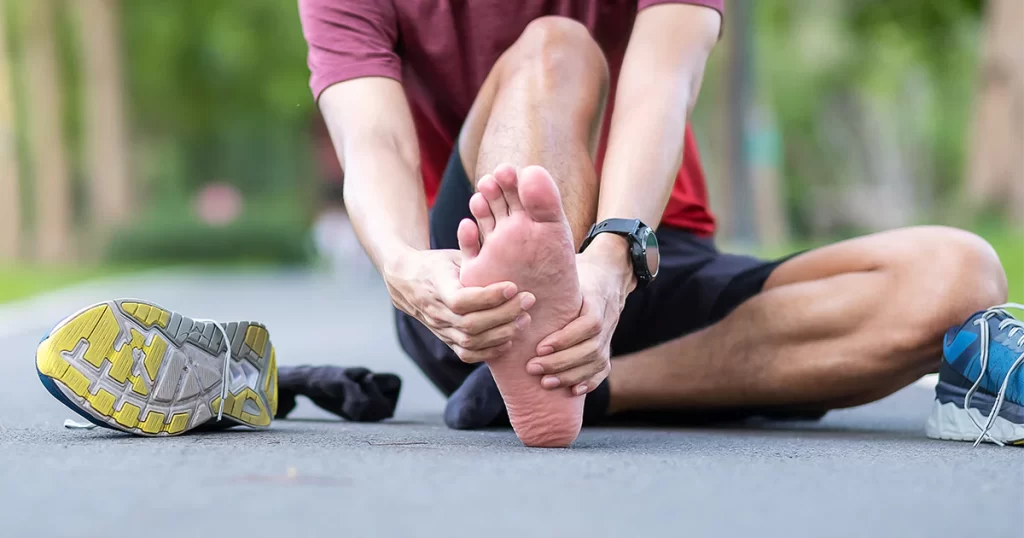
A lot of people are suffering from plantar fasciitis nowadays. This inflammatory condition occurs in your plantar fascia, which is a rubber band-like connective tissue that connects the heel to the toes. This inflammation can cause severe pain, which is why it must be treated immediately.
For torn plantar fascia, you must immediately contact a podiatrist. When you meet a podiatrist, he or she will analyze your symptoms and recommend the appropriate treatment for you. Your podiatrist mostly asks you some of the details related to your pain such as how long you have been experiencing the pain and when the pain occurs. Your podiatrist will ask you all these questions to understand whether you are experiencing pain due to plantar fasciitis or some other condition. Some of the tests, which they might recommend include MRI or X-ray.
If aging is the root cause of this problem, it cannot be prevented.
Some of the risk factors for this problem include –
- Having extremely high arches
- Having Diabetes
- Being overactive
- Putting too much pressure on heels and feet
For plantar fascia tear, contact a podiatrist like Dr. Sima Soltani. This podiatrist is very famous in Irvine for more than a decade. She is famous for her stem cell therapy, laser treatment for toenail fungus, etc. Taking her appointment is very easy now. Call her clinic and take her appointment.
How to prevent plantar fasciitis?
- Being overweight can increase the risk of Plantar Fasciitis. Hence, it is important to maintain healthy body weight. When you become overweight, it can put a strain on your body, especially your legs and eventually cause plantar fasciitis. To prevent this condition, ensure that you eat healthily. Add healthy food to your diet to stay healthy. Pick fruits and veggies that have anti-inflammatory properties.
- To prevent this condition, you must ensure that you wear the right shoe. In fact, the shoe you choose must support your heel and arch. Avoid the error of wearing high heels all day that put pressure on your arch before changing into supportive shoes for a workout. Your feet will be affected by the shoes you wear regularly. Try to stay away from wearing flip-flops and uncomfortable heels, as well as avoid going barefoot.
- It is a common misconception that only those with severe foot problems should use orthotics. Anyone can use orthotics to avoid this condition. If you still wanted to be sure about this, you could contact a podiatrist.
- If you go running regularly, make sure that you run only on smooth surfaces. If you run on hard surfaces, it can put pressure on your foot and leads to conditions like this.
- You may prevent overusing your muscles and tendons by paying attention to signals of pain and weariness along with your goals. Do not make abrupt increase in the time you spend exercising or how intensively you work out in order to prevent reaching your maximum capacity while playing.
- You must also keep yourself active to prevent conditions like this. Do not assume that this requires rigorous effort or even that you need to dress in workout gear. You may stay active and flexible by taking a short walk in your home, stretching for 10 minutes, or playing a game of catch with some friends.
What are the symptoms of plantar fasciitis?
Plantar fasciitis tear normally causes a steady increase in discomfort that is usually felt near the heel. Occasionally, the pain can come on suddenly after jumping. When you first wake up in the morning or after prolonged periods of inactivity, the pain is usually becoming worst.
The level of discomfort may occasionally decrease with daytime activity, but it may also worsen after extended or strenuous exertion. Additionally, wearing shoes with little support may make the discomfort seem more severe. Walking barefoot can also cause pain.
You could take the help of physical therapy to feel better. But it is important to contact a podiatrist because he or she will find the root cause for it and provides the best treatment. The treatments of a podiatrist do not involve surgery mostly. In fact, a podiatrist recommends surgery only in worse conditions. Explain your problem properly to a podiatrist to get the best treatment.







